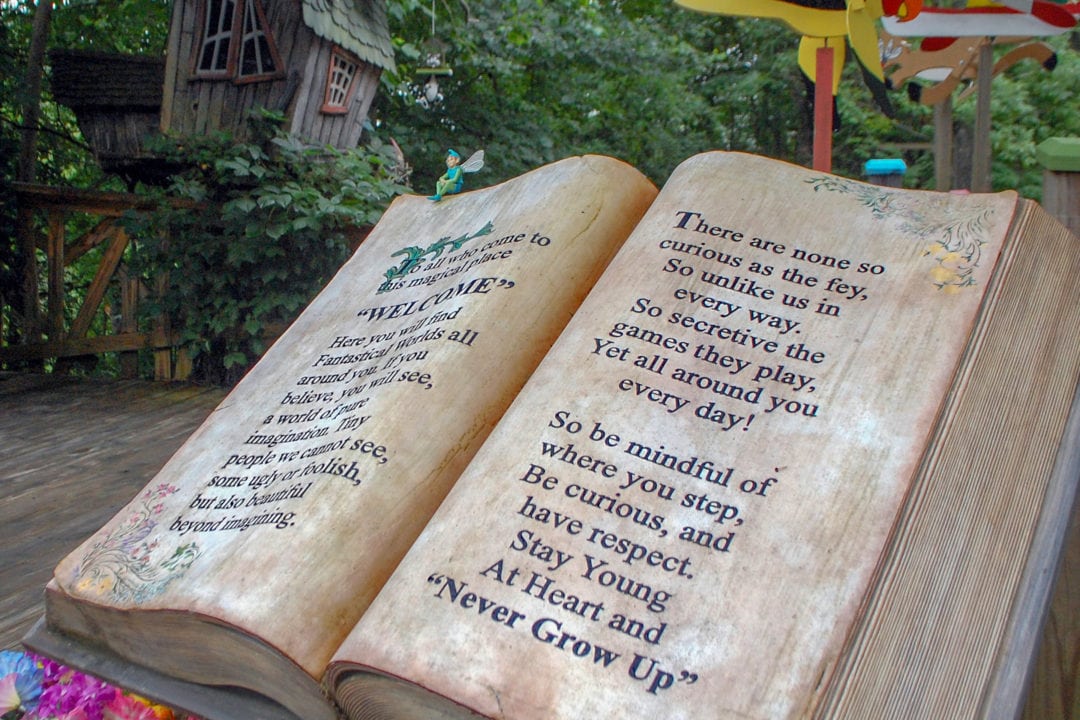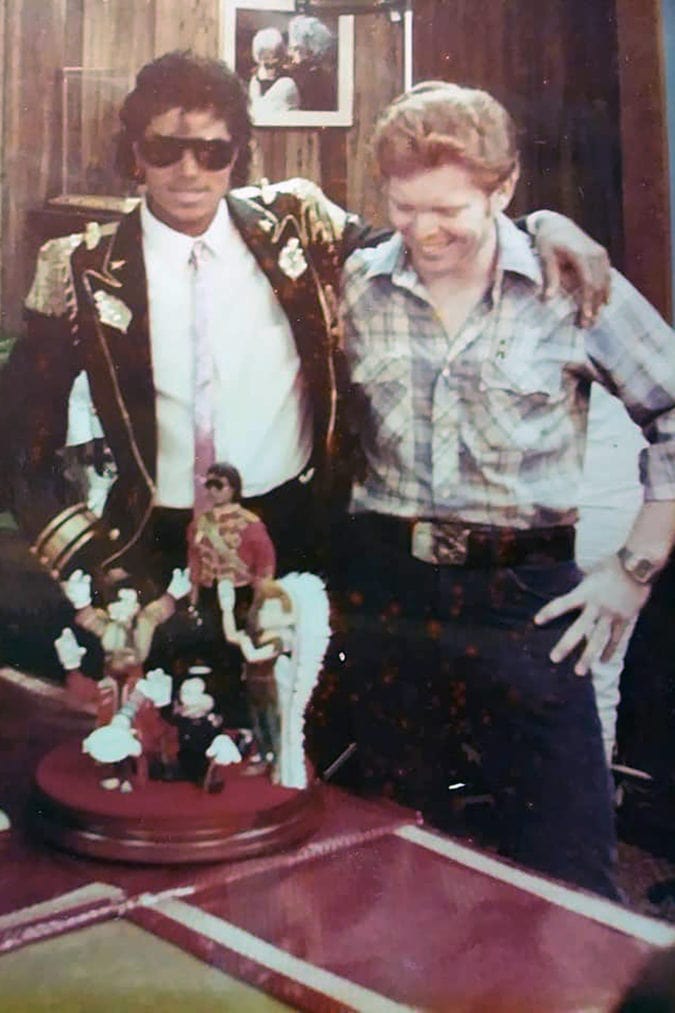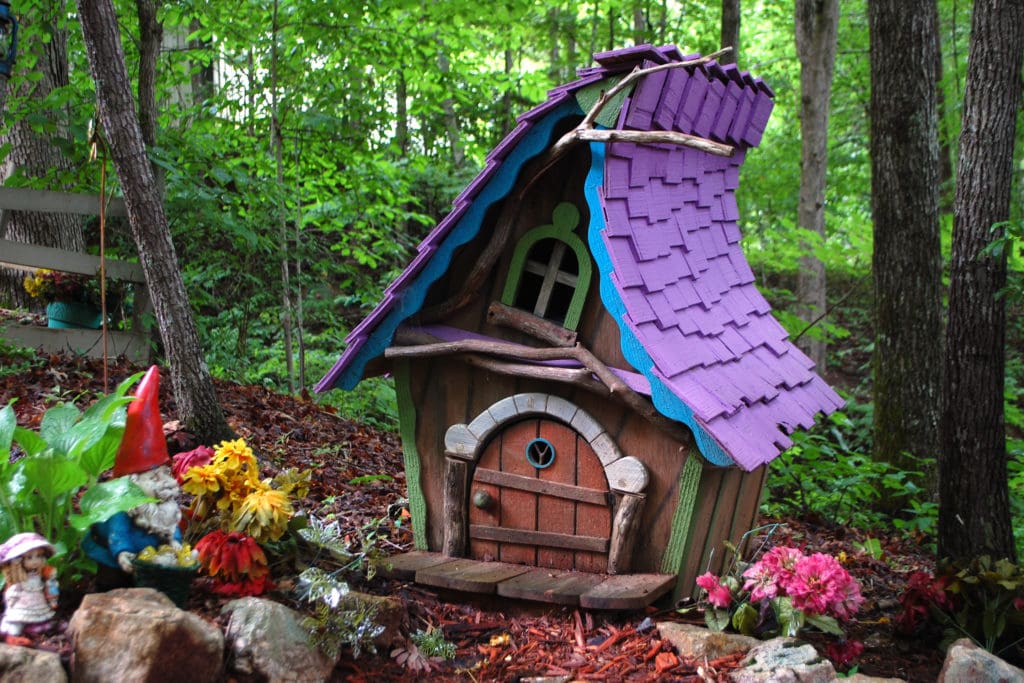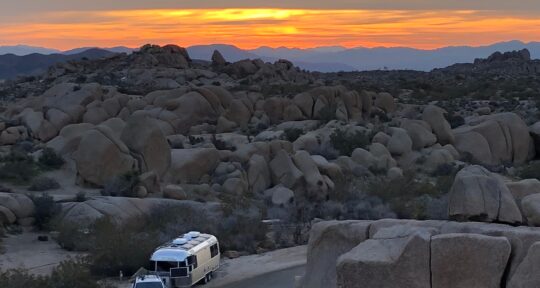Just off the highway in Blairsville, Georgia, partially enclosed by a crooked picket fence, a cluster of tiny homes and even tinier residents populate a strange but inviting landscape. Turn up the steep incline to the parking lot, and you’ll step into “fantastical worlds,” as promised by the storybook left open at the entrance to Sleepy Hollow Enterprises.
This promise brought me two hours north of Atlanta, a trip planned with the sole purpose of discovering this unusual place—and maybe capturing a little magic of my own.

For young and old
Sleepy Hollow is no ordinary gift shop. Near the entrance, a garden path winds through the woods and into a fairy village. Here, flowers overflow from Lilliputian window sills, and elves and pixies come out from hiding. "Watch where you step," warns one sign posted to a tree. A fairy painted on it, wearing a hard hat and a cheeky grin, waves her wand at me.
The houses themselves are whimsical: candy-colored paint, awnings askew, walls and roofs with a tendency to curve. Each one is unique and handcrafted by Art Millican, Jr., a Disney Imagineer turned entrepreneur who transplanted his love for fantasy from Orlando to the Blue Ridge foothills 16 years ago. He doesn't think my quest for magic is at all ridiculous.
"Magic is all around us,” Millican says. “Sleepy Hollow brings this magic to the young and old. That’s why I opened the place.”


Inside, Millican sells his creations, from fairy doors to gnome chalets, along with the diminutive characters that accompany them: mermaids, dragons, and the like. Outside, the garden, originally built to showcase the playhouses, birdhouses, and yard art, has grown into something more: a destination that draws people from as far away as Finland and Australia, a setting for proposals, and a roadside attraction that keeps visitors coming back, year after year.
"People are surprised at what they see," Millican explains. "When you're walking through the fairy village, you’re reminded of your youth … when you saw the world through the eyes of a child, where all things were magical.”

Making magic
Millican says he’s always loved fantasy, but he learned how to craft it from Disney. He started working at Orlando’s Magic Kingdom Park right out of high school in 1974, selling popcorn on Main Street.
“They wouldn’t hire a kid that thought he was an artist, so I took whatever job they offered,” he says. “That got my foot in the door. From there, I was able to find where all the artists were and talked and bugged them until they gave me a chance.”
They taught him the fundamentals of the art he practices today: sculpting, sewing, welding, woodworking, robotics, and electronics. It was everything he needed to take his two-dimensional drawings to a 3D reality.
With his newfound skills and a flair for the fantastic, Millican eventually left Disney to work with Michael Jackson on building his Peter Pan-themed Neverland Ranch. At the time, Millican's home base was in Florida and he traveled frequently for work, escaping for weekend trips to Blairsville whenever possible. In 2004, he decided to make it permanent. He moved to the mountains, married his wife Wendi, and got to work building his dream.

“I found this magical spot and created Sleepy Hollow Enterprises, a place where parents and children can come and play and use their imaginations," he says. "It’s a place they don’t have to grow up.”
Twisted garden
It took Millican about six months to finish the fairy village. It features more than a dozen homes, from playhouses large enough for a curious child or two (or a young-at-heart adult) down to pixie-sized dwellings. You can peer into tiny doors and windows. Sometimes there’s furniture inside.
While the Disney influence is unmistakable, it's Millican's quirky imagination that makes the place memorable. “It’s nice to be able to build what you want and not have somebody dictate to you,” he says. “I like being able to put my own twist on things.”
Those twists include a troll wishing well, chimneys that turn into mini houses, and several half-circle hobbit homes dug into a leafy cliff. A cat with a Looney Tunes air about him dangles precariously from a towering building, his head caught in a birdcage. When I ask what happened to the cat, Millican says, somewhat cryptically: “The cat in the cage was put there by the mean gremlins to show what happens to naughty creatures that try and hurt the fairies and their friends.”




I find that’s part of the charm of Sleepy Hollow. It's not all gingerbread trim and whirligigs, though there's plenty of both. Disembodied gloves point toward mysterious places like a goblin camp and troll hideout. Above a waterfall looms a ramshackle hut, which strikes a pleasantly sinister note. Millican tells me the design for that house is intentionally rustic.
“This isn’t Toontown,” he adds. “If you were an elf or a leprechaun, you would want something that would blend with the scenery.”
His favorite piece? A miniature turreted castle crowning a toadstool-studded hill. It was a wedding gift to his wife. “She has always been my inspiration,” Millican says. “She is the Wendi to my Peter Pan.”
The future of fairyland
Maintaining the village takes a lot of work; Millican refurbishes houses and restores figurines to their original location after they’ve wandered off—either supernaturally or with the help of little hands, it’s hard to say. It requires constant upkeep, Millican says, not all that different from a theme park.
But despite his best efforts, the fairy trail may prove as ephemeral as the sprites who inhabit it. The nearly 3-acre property, which includes the Millicans' home, is currently under threat of imminent domain, though they're contesting the state's valuation of the land. Millican says if he has to abandon the fairy garden, he doesn’t know if he’ll be able to recreate it.

“It needs the ambiance of being in the woods,” he says. “You can’t just put this in a neighborhood or a strip mall and expect it to work.”
Meanwhile, Millican is staying busy—whimsy is in high demand right now, and the shop has a backlog of orders. He still does some work for theme parks, including Disney, Universal, and Dollywood, creating props and models for product development. He also crafts complex steampunk contraptions for conventions across the country. Most days, though, he’s doing what he loves most: building fairy homes and helping others glimpse a world beyond their own.
“Seeing isn't believing. Believing is seeing,” Millican says. “There is so much magic in the world that if you truly believe, your eyes and heart will open a magical world before you. Stay young and believe and you, too, shall see the wonders of Sleepy Hollow.”
If you go
Sleepy Hollow is open Monday through Saturday from 9:30 a.m. to 4:30 p.m. with some COVID-19 precautions in place. Admission to the fairy village is free, but donations are welcome.








